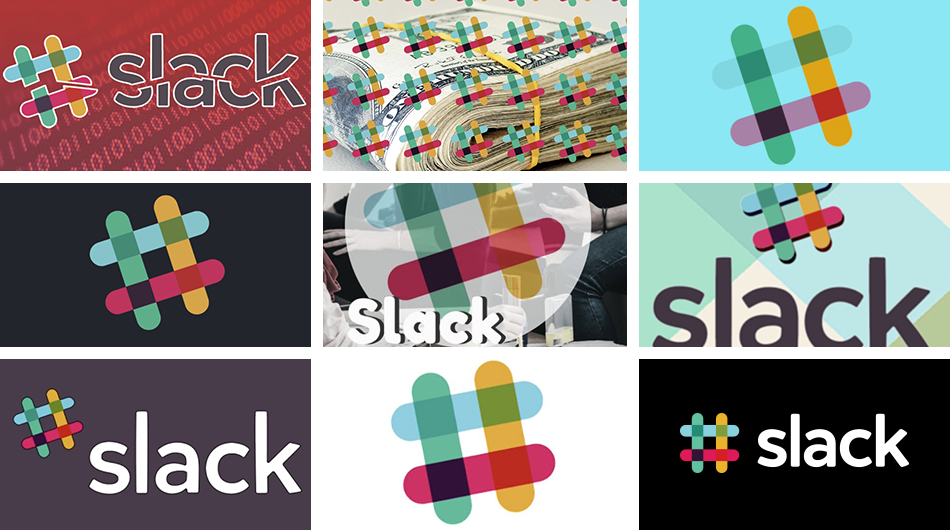
Weather forecasters correctly predicted two months ago the extreme cold weather now hitting the US. CC-licensed photo by Coast Guard News on Flickr.
A selection of 13 links for you. Redone? I’m @charlesarthur on Twitter. Observations and links welcome.
Polar Vortex 2019: why forecasts are so accurate now • The Atlantic
»
“A modern five-day forecast is as accurate as a one-day forecast was in 1980,” says a new paper, published last week in the journal Science. “Useful forecasts now reach nine to 10 days into the future.”
The paper is a birthday present from meteorology to itself: the American Meteorological Society turns 100 this year. But it also acts as a good report card on how far weather prediction has come.
“Modern 72-hour predictions of hurricane tracks are more accurate than 24-hour forecasts were 40 years ago,” the authors write. The federal government now predicts storm surge, stream level, and the likelihood of drought. It has also gotten better at talking about its forecasts: As I wrote in 2017, the National Weather Service has dropped professional jargon in favor of clear, direct, and everyday language.
“Everybody’s improving, and they’re improving a lot,” says Richard Alley, an author of the paper and a geoscientist at Penn State.
With the current polar vortex, the first signs came almost a month in advance. On the final day of 2018, scientists detected what they call a “sudden stratospheric warming event,” high above the North Pole. The stratosphere, a layer of air about 20 miles above the surface, was being rocked by waves of warm air from below.
“What happens in the Arctic does not stay in the Arctic,” warned the meteorologist Andrew Freedman at the time. “Sudden stratospheric warming events are known to affect the weather in the US and Europe on a time delay.” The next 60 days would probably be colder than average, he said.
«
The “why” isn’t answered in this article, but is in the linked Science article. You guessed: better computers running more precise models. Down to -40C in the US from the polar vortex – which, yes, is attributable to global warming.
link to this extract
An AI crushed two human pros at StarCraft—but it wasn’t a fair fight • Ars Technica
»
As this chart demonstrates, top StarCraft players can issue instructions to their units very quickly. Grzegorz “MaNa” Komincz averaged 390 actions per minute (more than six actions per second!) over the course of his games against AlphaStar. But of course, a computer program can easily issue thousands of actions per minute, allowing it to exert a level of control over its units that no human player could match.
To avoid that, DeepMind says it put a hard cap on the number of actions per minute AlphaStar could make. “We set a maximum of 600 APMs over 5-second periods, 400 over 15-second periods, 320 over 30-second periods, and 300 over 60-second period,” wrote DeepMind researcher Oriol Vinyals in a reddit AMA following the demonstration.
But as other redditors quickly pointed out, five seconds is a long time in a StarCraft game. These limits seem to imply that AlphaStar could take 50 actions in a single second or 15 actions per second for three seconds.
More importantly, AlphaStar has the ability to make its clicks with surgical precision using an API, whereas human players are constrained by the mechanical limits of computer mice. And if you watch a pro like Komincz play, you’ll see that the number of raw actions often far exceeds the number of meaningful actions.
For example, if a human player is guiding a single unit on an important mission, he will often issue a series of “move” commands along the unit’s current trajectory. Each command barely changes the unit’s path, but, if the human player has already selected the unit, it takes hardly any time to click more than once. But most of these commands aren’t strictly necessary; an AI like AlphaStar could easily figure out the unit’s optimal route and then issue a much smaller number of move commands to achieve the same result.
So limiting the raw number of actions an AI can take to that of a typical human does not necessarily mean that the number of meaningful actions will be remotely comparable.
«
Notice the way this assertion slides past the realities here. Computers are going to be better at doing lots of things really fast; the human advantage is meant to be the capability to think strategically about what things to do. That strategic advantage has been ceded to AlphaStar, and so people complain about its speed.
How long before these systems are running defence computers, determining and carrying out attack plans?
link to this extract
Welcome • Statistics Done Wrong
»
If you’re a practicing scientist, you probably use statistics to analyze your data. From basic t tests and standard error calculations to Cox proportional hazards models and propensity score matching, we rely on statistics to give answers to scientific problems.
This is unfortunate, because statistical errors are rife.
Statistics Done Wrong is a guide to the most popular statistical errors and slip-ups committed by scientists every day, in the lab and in peer-reviewed journals. Many of the errors are prevalent in vast swaths of the published literature, casting doubt on the findings of thousands of papers. Statistics Done Wrong assumes no prior knowledge of statistics, so you can read it before your first statistics course or after thirty years of scientific practice.
«
Worth a read just so you can get a feel for how statistics are used against you.
link to this extract
Is Alexa working? • Benedict Evans
»
the paradox of an audio-only interface is that it looks like a much more flexible and free-form interface than a graphical interface, but in fact it has no way to tell you what it can do. If it has 5,000 ‘skills’, you can’t ask it to recite them, one by one. Solving this discoverability problem is one reason both Amazon and Google are exploring devices with small screens (through that doesn’t help the devices that are already out there).
Taking a step back, though, I think there is a deeper strategic value to Alexa – option value.
One of the fundamental shifts that came with mobile was that the users’ device became a lot less neutral. On the desktop, there were pretty narrow limits to what a web browser could do to control the economic models and interaction models of websites, but on a smartphone, the management of everything from system permissions to default apps to notifications and interaction models (not to mention in-app purchase) means that Apple and Android are in much more direct control of what business models are possible. Ironically, a major reason why Google bought and built Android in the first place was fear of what Microsoft and Nokia might do with such power. Now both Amazon is faced with this. The end point has become much more strategic for web platform companies. So, anything you can do to get an end-point of your own has value for the future, even if no-one today uses it to buy soap powder.
«
New iPhone, iPad in 2019 and 2020: what to expect from Apple • Bloomberg
»
For 2019, Apple plans successors to the iPhone XS and iPhone XS Max – codenamed D42 and D43 – and an update to the iPhone XR, said the people. The larger of the new high-end iPhones will have three cameras on the back, and other handsets could eventually come with the upgraded system, too, the people said…
…The laser-powered 3-D camera could debut first on an upgrade to the iPad Pro currently planned for as early as spring 2020, according to one of the people. Apple isn’t expected to release a major iPad Pro update this year like it did in 2018.
…Apple is also testing some versions of this year’s iPhone line that includes a USB-C connector instead of the Lightning port that has been used on iPhones since 2012, indicating that the company plans an eventual switch, according to one of the people. Moving to USB-C would make the new models compatible with chargers used for hundreds of other devices, like Android phones.
…Apple’s next operating system update, iOS 13, will include a dark mode option for easier nighttime viewing and improvements to CarPlay, the company’s in-vehicle software. There will also be iPad-specific upgrades like a new home screen, the ability to tab through multiple versions of a single app like pages in a web browser, and improvements to file management.
«
“Improvements to file management”, huh? Sounds like the USB-C port is going to come in useful. But 3D cameras? Hm.
link to this extract
Facebook pays teens to install VPN that spies on them • Techcrunch
»
Since 2016, Facebook has been paying users ages 13 to 35 up to $20 per month plus referral fees to sell their privacy by installing the iOS or Android “Facebook Research” app. Facebook even asked users to screenshot their Amazon order history page. The program is administered through beta testing services Applause, BetaBound and uTest to cloak Facebook’s involvement, and is referred to in some documentation as “Project Atlas” — a fitting name for Facebook’s effort to map new trends and rivals around the globe.
[Update 11:20pm PT: Facebook now tells TechCrunch it will shut down the iOS version of its Research app in the wake of our report. The rest of this article has been updated to reflect this development.]
Facebook’s Research program will continue to run on Android. We’re still awaiting comment from Apple on whether Facebook officially violated its policy and if it asked Facebook to stop the program. As was the case with Facebook removing Onavo Protect from the App Store last year, Facebook may have been privately told by Apple to voluntarily remove it.
We asked Guardian Mobile Firewall’s security expert Will Strafach to dig into the Facebook Research app, and he told us that “If Facebook makes full use of the level of access they are given by asking users to install the Certificate, they will have the ability to continuously collect the following types of data: private messages in social media apps, chats from in instant messaging apps – including photos/videos sent to others, emails, web searches, web browsing activity, and even ongoing location information by tapping into the feeds of any location tracking apps you may have installed.”
«
Just astonishing. Facebook truly is the scorpion on the back of the frog; it just can’t help itself.
Meanwhile, it’s a reminder that VPNs only offer privacy from those who aren’t controlling the VPN. So that’s the shot; here’s the chaser…
link to this extract
Apple revokes Facebook’s developer credentials over an app that mined teenagers’ device data • Buzzfeed
»
Apple said in a statement on Wednesday: “We designed our Enterprise Developer Program solely for the internal distribution of apps within an organization. Facebook has been using their membership to distribute a data-collecting app to consumers, which is a clear breach of their agreement with Apple. Any developer using their enterprise certificates to distribute apps to consumers will have their certificates revoked, which is what we did in this case to protect our users and their data.”
This is not the first time Facebook has run afoul of Apple’s developer policies. When its data-collecting Onavo VPN app was booted from the App Store last August, the company said, “As a developer on Apple’s platform, we follow the rules they’ve put in place.”
Apple’s decision to revoke Facebook’s developer certificate came just hours after TechCrunch first wrote about the Facebook Research app. The app will, however, continue to be available on Android.
«
Revoking the enterprise credentials means that Facebook can’t test internal builds of its app on phones among test groups. That’s a big move. Also: your move, Google. Speaking of whom…
link to this extract
Google’s also peddling a data collector through Apple’s back door • TechCrunch
Zack Whittaker, Josh Constine and Ingrid Lunden:
»
It looks like Facebook is not the only one abusing Apple’s system for distributing employee-only apps to sidestep the App Store and collect extensive data on users. Google has been running an app called Screenwise Meter, which bears a strong resemblance to the app distributed by Facebook Research that has now been barred by Apple, TechCrunch has learned.
In its app, Google invites users aged 18 and up (or 13 if part of a family group) to download the app by way of a special code and registration process using an Enterprise Certificate. That’s the same type of policy violation that led Apple to shut down Facebook’s similar Research VPN iOS app, which had the knock-on effect of also disabling usage of Facebook’s legitimate employee-only apps — which run on the same Facebook Enterprise Certificate — and making Facebook look very iffy in the process.
«
Google disabled the app on iOS within hours of the story going up. “This app is completely voluntary and always has been,” it said in a statement. (I don’t think anyone was suggesting they forced it on people; that’s not the complaint.) It also said “We have no access to encrypted data in apps and on devices”, which is more helpful. And since we’re on Google…
link to this extract
I cut Google out of my life. It screwed up everything • Gizmodo
Kashmir Hill set up a VPN to block all of Google’s 8m-odd IP addresses, to see what life looked like:
»
Google, like Amazon, is woven deeply into the infrastructure of online services and other companies’ offerings, which is frustrating to all the connected devices in my house.
“Your smart home pings Google at the same time every hour in order to determine whether or not it’s connected to the internet,” Dhruv tells me. “Which is funny to me because these devices’ engineers decided to determine connectivity to the entire internet based on the uptime of a single company. It’s a good metaphor for how far the internet has strayed from its original promise to decentralize control.”
In some cases, the Google block means apps won’t work at all, like Lyft and Uber [which use it for maps], or Spotify, whose music is hosted in Google Cloud. The more frequent effect of the Google block though is that the internet itself slows down dramatically for me.
Most of the websites I visit have frustratingly long load times because so many of them rely on resources from Google and get confused when my computer won’t let them talk to the company’s servers. On Airbnb, photos won’t load. New York Times articles won’t appear until the site has tried (and failed) to load Google Analytics, Google Pay, Google News, Google ads, and a Doubleclick tracker.
As I sit staring at my screen and drumming my fingers, I get flashbacks to computing via dial-up in the ’90s, when I used to read a book while waiting for websites to open. It’s amazing to see how often sites are trying to serve trackers, ads, and analytics from Google before their own content.
«
Clever idea for a story. Facebook next?
link to this extract
US market sell-through drops 10% YoY in 4Q18 • Counterpoint Research
»
Research director Jeff Fieldhack stated, “We saw the same trends in 4Q as we saw during the whole year. Holding periods continued to creep longer. Upgrade percentages during the quarter were down and could be down as much as 3% on the year. Phone churn continues to be impressively low and was under 1% at three of the four major carriers. Lastly, carriers were more disciplined in their marketing spend and focused on EBITDA margins over winning net adds at all costs. These all contributed to lower smartphone sell-through numbers.”
Fieldhack added, “Prepaid did not consume the number of handsets in 2018 it consumed across 2017. Prepaid used to have a holding period well under one year. Today, holding periods are closer to postpaid holding periods due to the higher quality of devices. Devices with large displays and batteries, with lower-cost mid-tier processors, are the workhorses within prepaid. These devices have the longevity of higher ASP postpaid devices. In addition, the evolution of the refurbish and repair ecosystem makes it easier for consumers to either purchase a high-quality used device or repair a current device. We estimate the US absorbed almost 11.5m refurbished smartphones in 2018. These are meaningful numbers of consumers deciding not to buy new.”
«
Then again, Apple had 47% of the market there, according to Counterpoint. Samsung was next with 23%. The biggest grower? You probably won’t guess.
Data without a cause — the hype and hope around wearables • Medium
»
none of the users I talked to had presented any of their sleep or activity data to their doctors or other health professionals. Despite their intrigue, the weekly heart rate variance or the share of REM of last night’s sleep are still arbitrary numbers with little actionability from a scientific perspective. What does a readiness level of 73 actually mean and how does it differ from 52? Are these just vanity metrics or is there a way for the doctor to somehow contextualize them?
The most avid proponents of quantified self think that the clinical system is broken. In times where scientific versus experiential experience is a continuous topic of discussion, the information asymmetry argued to have benefited the clinicians instead of the patients is now perceived to have been turned upside down thanks to the rise of wearables and the democratized access to data. But it’s important to note that all data doesn’t carry the same value. The information asymmetry argument holds true when looking only at the sheer volume, but the main challenge of identifying the clinical benefit of wearables data and integrating it to the clinical work is that despite being mile wide, it’s still only an inch deep…
…Health data is the last frontier that lacks democratization, and the push for wearables is a result of that impatience. The data and the consumer-grade devices presenting it might be far from reliable, but they are the first wave towards a more open health data ecosystem and needs to be taken seriously. The responsibility to interpret the readiness levels and sleep data doesn’t lie with the individual, but with the doctors and every other actor in the ecosystem.
«
Exclusive: Foxconn reconsidering plans to make LCD panels at Wisconsin plant • Reuters
»
Foxconn Technology Group is reconsidering plans to make advanced liquid crystal display panels at a $10 billion Wisconsin campus, and said it intends to hire mostly engineers and researchers rather than the manufacturing workforce the project originally promised.
Announced at a White House ceremony in 2017, the 20-million square foot campus marked the largest greenfield investment by a foreign-based company in U.S. history and was praised by President Donald Trump as proof of his ability to revive American manufacturing.
Foxconn, which received controversial state and local incentives for the project, initially planned to manufacture advanced large screen displays for TVs and other consumer and professional products at the facility, which is under construction. It later said it would build smaller LCD screens instead.
Now, those plans may be scaled back or even shelved, Louis Woo, special assistant to Foxconn Chief Executive Terry Gou, told Reuters. He said the company was still evaluating options for Wisconsin, but cited the steep cost of making advanced TV screens in the United States, where labor expenses are comparatively high.
“In terms of TV, we have no place in the U.S.,” he said in an interview. “We can’t compete.”
«
Apparently it’s not going to be a factory, and rather than having 5,200 people by the end of 2020 that’ll probably be more like 1,000. A neat bait-and-switch for the $4bn in tax breaks it got. Wisconsin narrowly voted for Trump. By the time the next election comes around, will voters feel the same?
link to this extract
Huawei and Xiaomi near 34m customers in western Europe • Kantar World Panel
»
Dominic Sunnebo, Global Director for Kantar Worldpanel ComTech comments: “The European smartphone market remains highly competitive. Despite recent negative headlines for the Chinese manufacturers, there’s no evidence that these issues have affected sales as Huawei, Honor and Xiaomi continue their concerted push into western Europe.
“Samsung and Apple still performed admirably, with disruption limited to only a marginal loss of market share.”
Xiaomi is now the fourth best-selling smartphone brand in Europe, with nearly six million active owners. The manufacturer is continuing to expand rapidly in Spain and, more recently, in Italy and France as well. Sunnebo comments: “Having only launched in the UK in November last year, Xiaomi’s presence in Great Britain is still small, but with new products already going on sale in January we expect further growth in 2019. The Chinese manufacturer has found success so far with a competitive pricing strategy which places its most expensive flagship model at around £500. This appeals to users who are looking for premium quality but are not willing or able to splash out the best part of a four-figure sum.”
“While Samsung and Apple are still doing well in Europe, the impact these Chinese giants are having on the market is causing headaches for the smaller operators. Sony, LG and Wiko are being disproportionally impacted because of their historic stakes in the ultra-competitive low and mid-price tiers. To keep up in this landscape, these brands should take heed from their competitors when it comes to marketing…”
«
I think LG and Sony aren’t going to compete in this field much longer. There simply isn’t any profit in it for them.
link to this extract
You can sign up to receive each day’s Start Up post by email. You’ll need to click a confirmation link, so no spam.
Errata, corrigenda and ai no corrida: none notified














